First, the good news: I don’t think they’re going to knock it down.
Once I rode out to Havířov station from Ostrava (just 20 minutes away) and took a look around, I immediately panicked. The building was obviously suffering from long-term neglect (I mean more so than the average Czech train station – which says something), and way over-scale for a relatively small train junction like Havířov. In other words, exactly the kind of building that people love to tear down.
But a few minutes of googling around revealed a Herculean effort underway to save the building that I had not been aware of. I found the website: Nádraží Havířov žije (Havířov station lives), by the local architecture association Důl architektury, dedicated to educating the public on the building’s aesthetic value. That led me down a virtual rabbit hole of exhibitions, cultural events, Facebook pages, and architectural competitions -- all focused on saving the station. The campaign eventually won over then-Transportation Minister Zdeněk Žák.
In a country that sometimes seems determined to obliterate all vestiges of its recent past under Communism, it was heartwarming.
The rescue effort appears to have paid off. According to this news article from early February, Czech Railways (the building’s main owner) and the city of Havířov have now agreed on a project to renovate the station and rework it into a kind of transportation and community center. The architects are expected to present their design by late April, and work is scheduled to begin in the autumn. Of course, nothing is ever a done deal, but it looks now as if the main hall and the building's most important architectural elements will be preserved.
Though I didn’t know much about Havířov before visiting, it’s one of those places that becomes more interesting the more you learn about it. From the town’s Wikipedia page, I learned it came into existence only after World War II as a purpose-built mining town. In fact, it’s the youngest “city” in the Czech Republic, having been incorporated only in 1955. The earliest worker housing in Havířov was built in the Socialist-Realism style that I wrote about a couple of weeks ago (after attending an exhibition on Czech post-war housing at Prague’s Museum of Decorative Arts). The city still feels like something of a time capsule from those days. The population is about 70,000 people, but the place feels much quieter.
The train station design dates to 1959, shortly after Czechoslovakia’s participation at the Brussels ’58 World’s Fair, and was the work of Moravian architect Josef Hrejsemnou (1928-2010). It was completed over several years in the 1960s. Hrejsemnou was born in the city of Zlín, and may well have developed an appreciation of modern, “Functionalist” architecture after seeing the stylish worker housing that the Czech shoe mogul, Tomáš Baťa, constructed in that city in the 1920s and ‘30s.
While I’ve always admired “Brussels Style” (Bruselský styl in Czech) -- that optimistic period of Czech architecture and design that reigned here through most of the 1960s -- I’ve never quite been able to find the right words to express what it really means. As I wrote above, the term originated from the World Expo in 1958 in Brussels, where the Czechoslovak pavilion won a gold medal, but now try putting that style into words …
I usually fall back on general descriptors like “retro-futurism” or “late-International style” or even “Jetson’s" style, after the popular American cartoon when I was a kid. Its closest Western analogue is probably something like "Mid-Century Modern." (I noticed that the exhibition on postwar housing at Prague’s Museum of Decorative Arts refrained from using the term “Brussels Style,” instead calling the buildings part of the “Beautiful Phase” of postwar construction.)
I’ll try to flesh out the definition a bit more here. Brussels’ buildings tended to favor modern materials, like lightweight steel, formica, molded plastic, and glass, but used in ways to add lightness and humor to the structures. The overall aesthetic was minimalism, and in this way reminiscent of interwar Functionalism, but brighter and funkier. Some of the straight-edge rectilinear shapes of earlier buildings from the 1950s were softened and given gentle curves. Brussels’ buildings were often sprinkled with elements here and there of abstract or pop art – such as oversized sculptures of flowers or tiled mosaics. The effect was to lend a playful touch as if to reassure people who used the buildings the future would be fun.
I write a lot about architecture on this blog, but I’m certainly no expert. To answer the question of what makes the Havířov station such a textbook example of “Brussels Style,” I’d point out what I think are several key markers.
The first would be the building’s overall horizontal, trapezoidal shape, wider at the bottom and narrower at the top. The shape resembles something of a mid-century toaster, or a TV or radio console from the 1950s.
The building’s main architectural statement is clearly the massive lobby, with it full, front-facing glass wall, tiled floors, artfully geometric, tiled ceiling, and gently curving stairway toward the middle.
Small rows of wood-molded chairs, curvy, marble benches, and a colorful mural on a side wall provide the finishing touches of a graceful public space that in its heyday must have amused and cheered and elevated the citizens of what, after all, is a fairly remote mining town.
If you're interested in modern architecture, check out my earlier posts on Prague's Kotva department store or the wacky, wonderworld of Communist-era hotels.
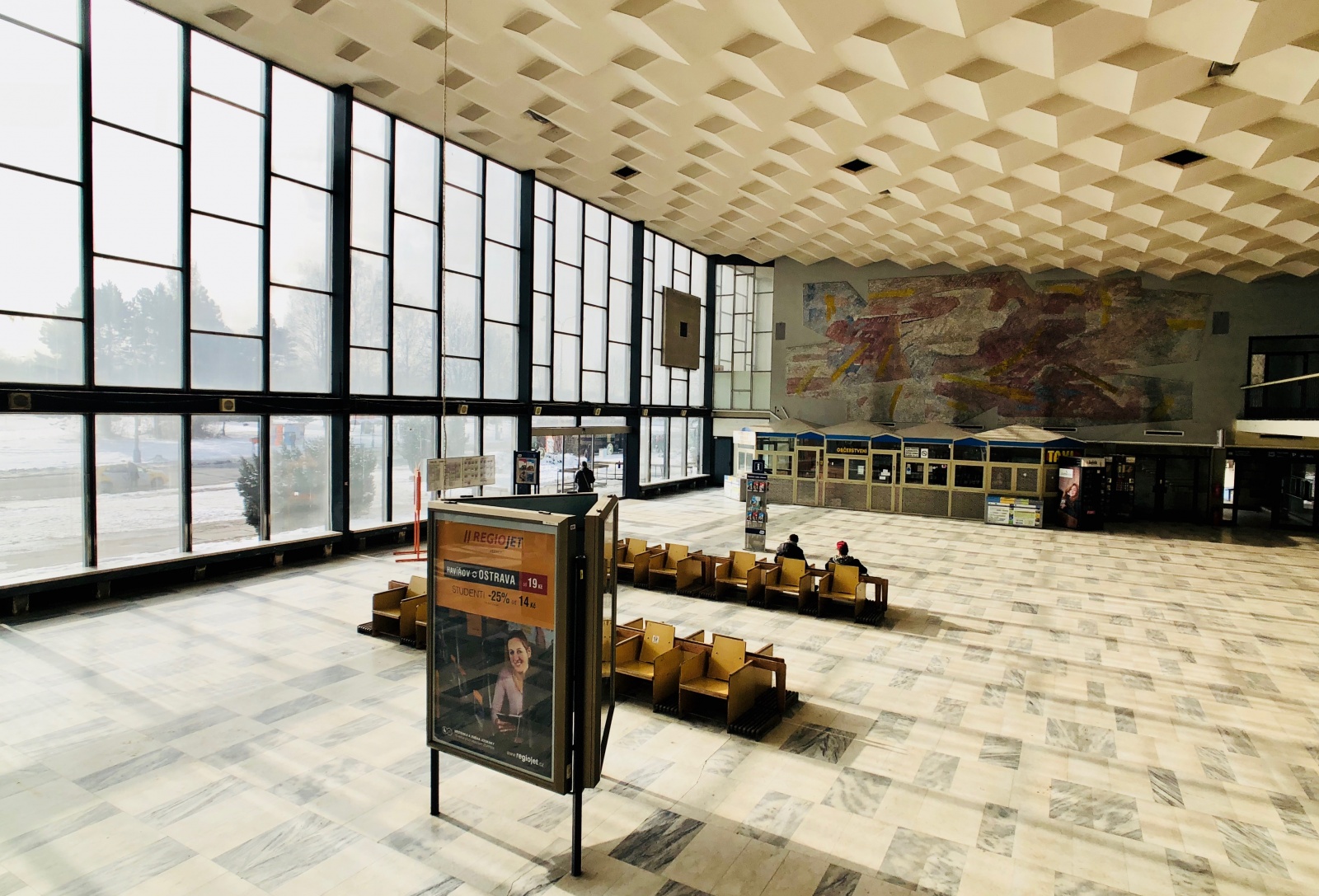
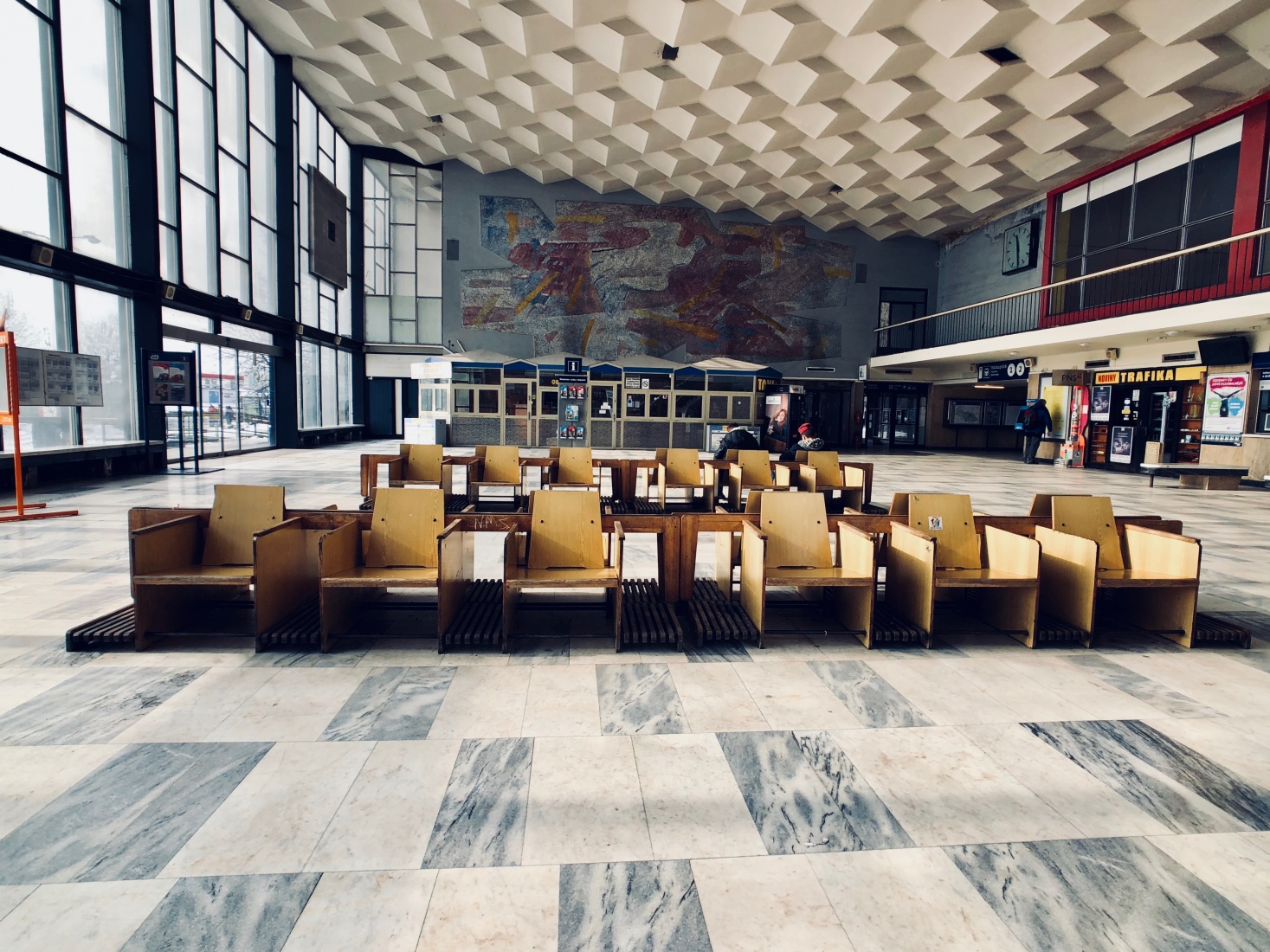
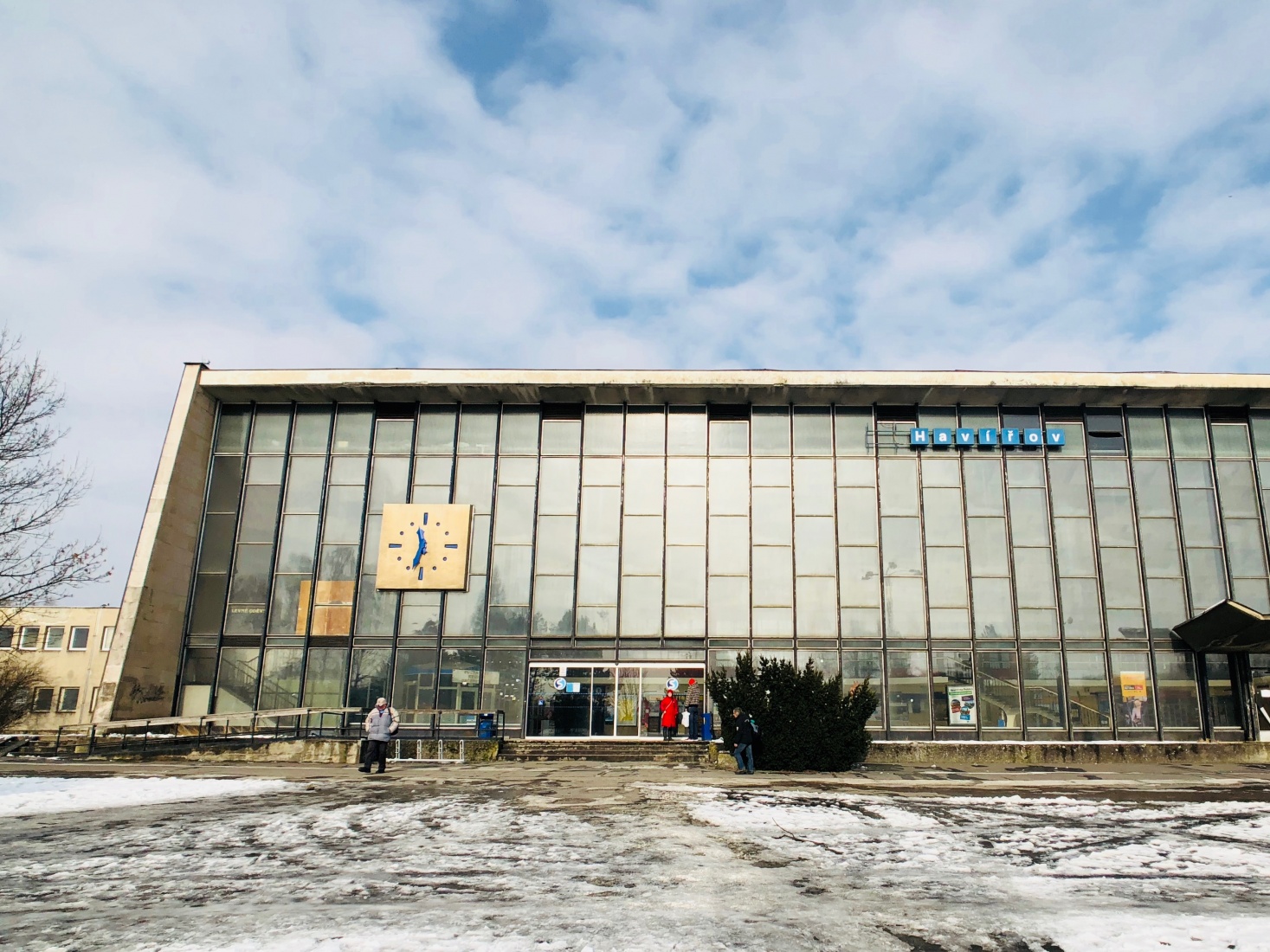
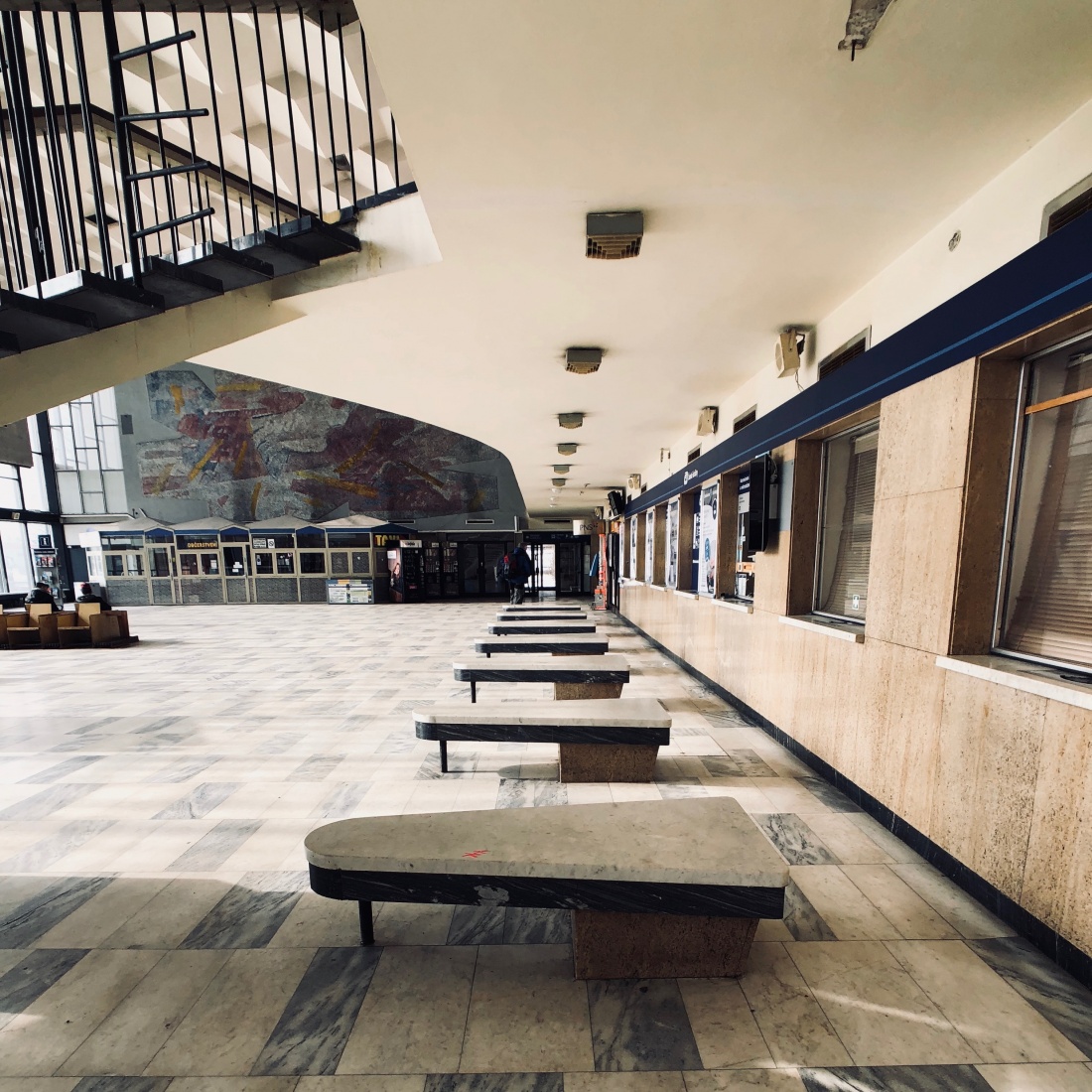
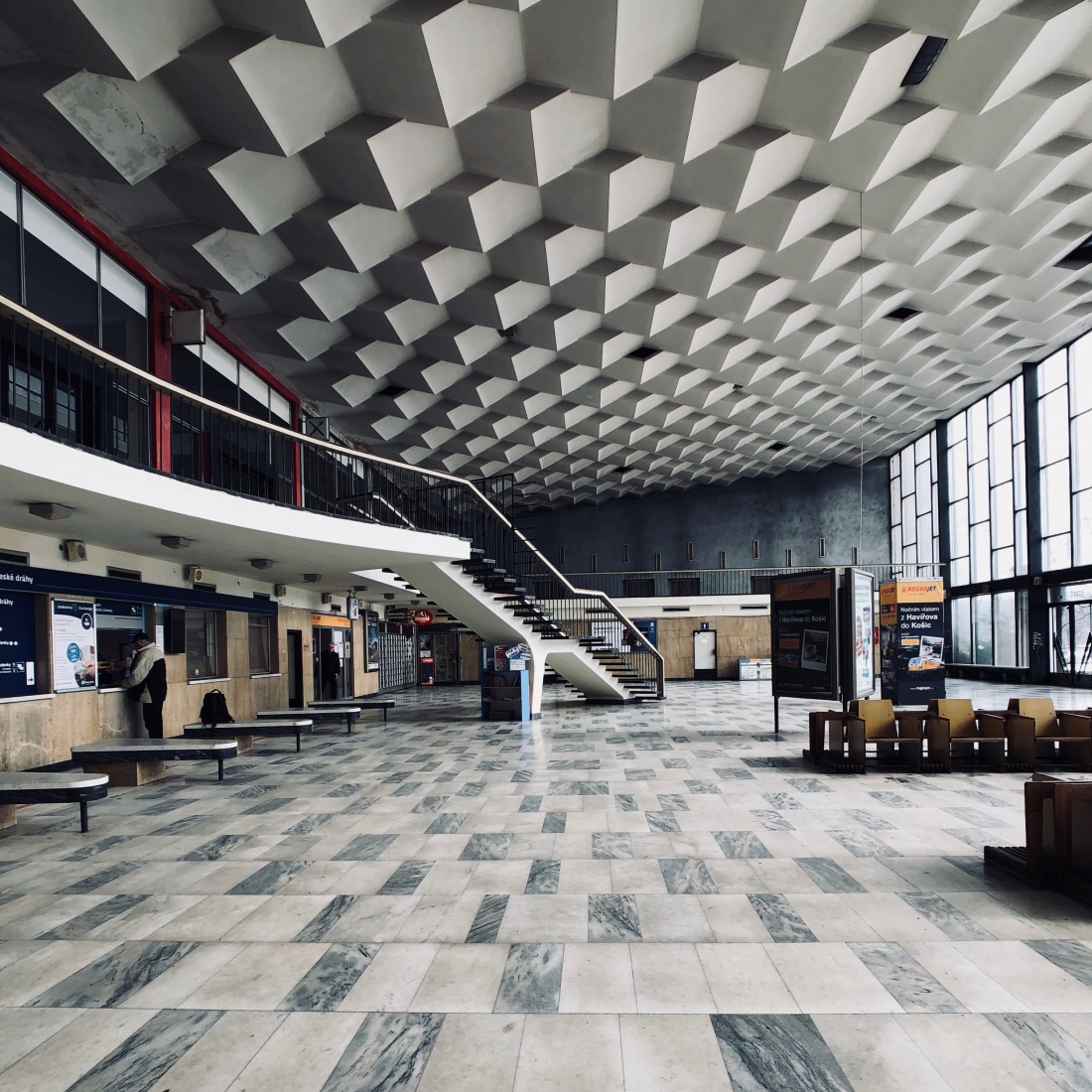
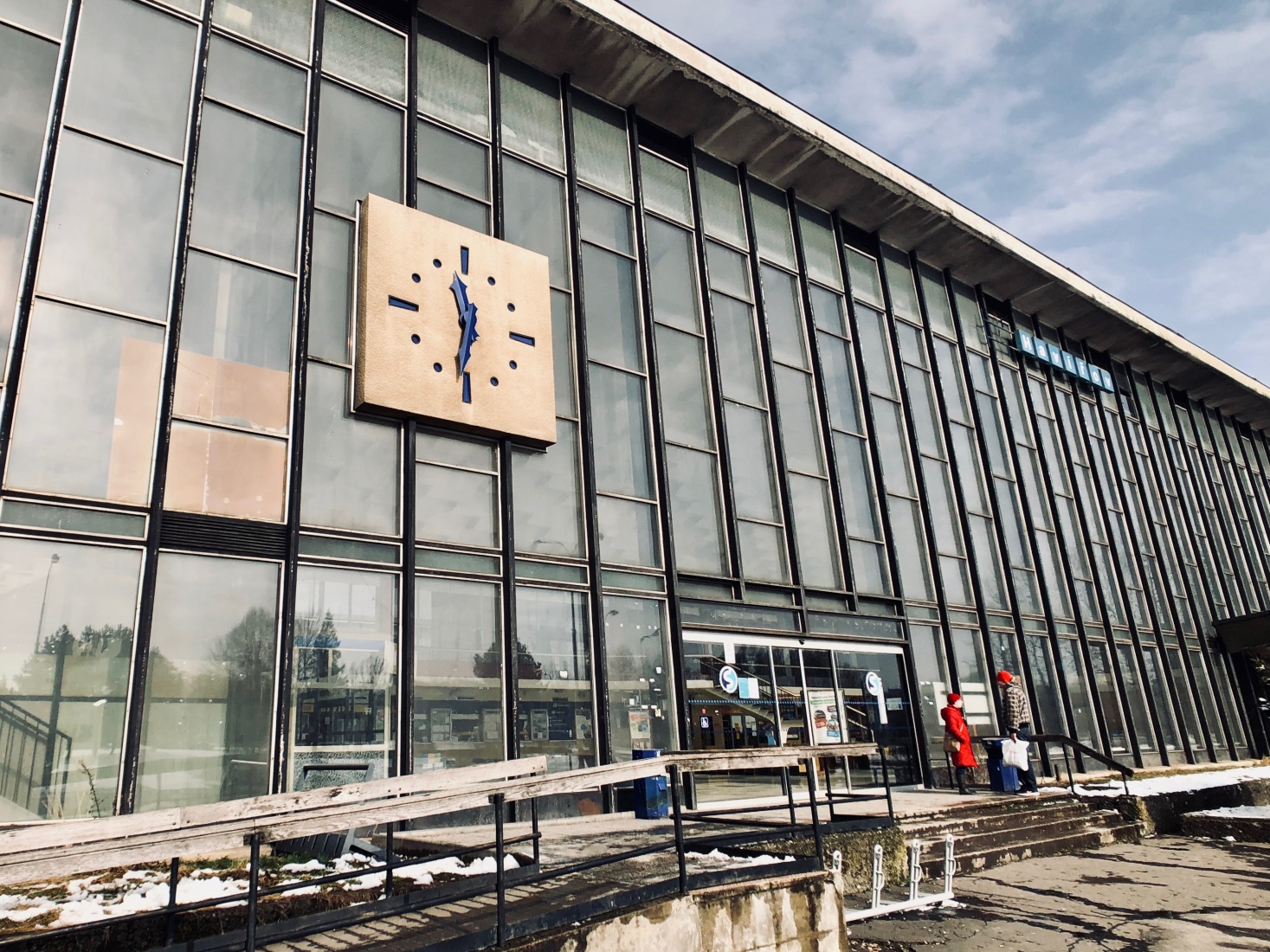
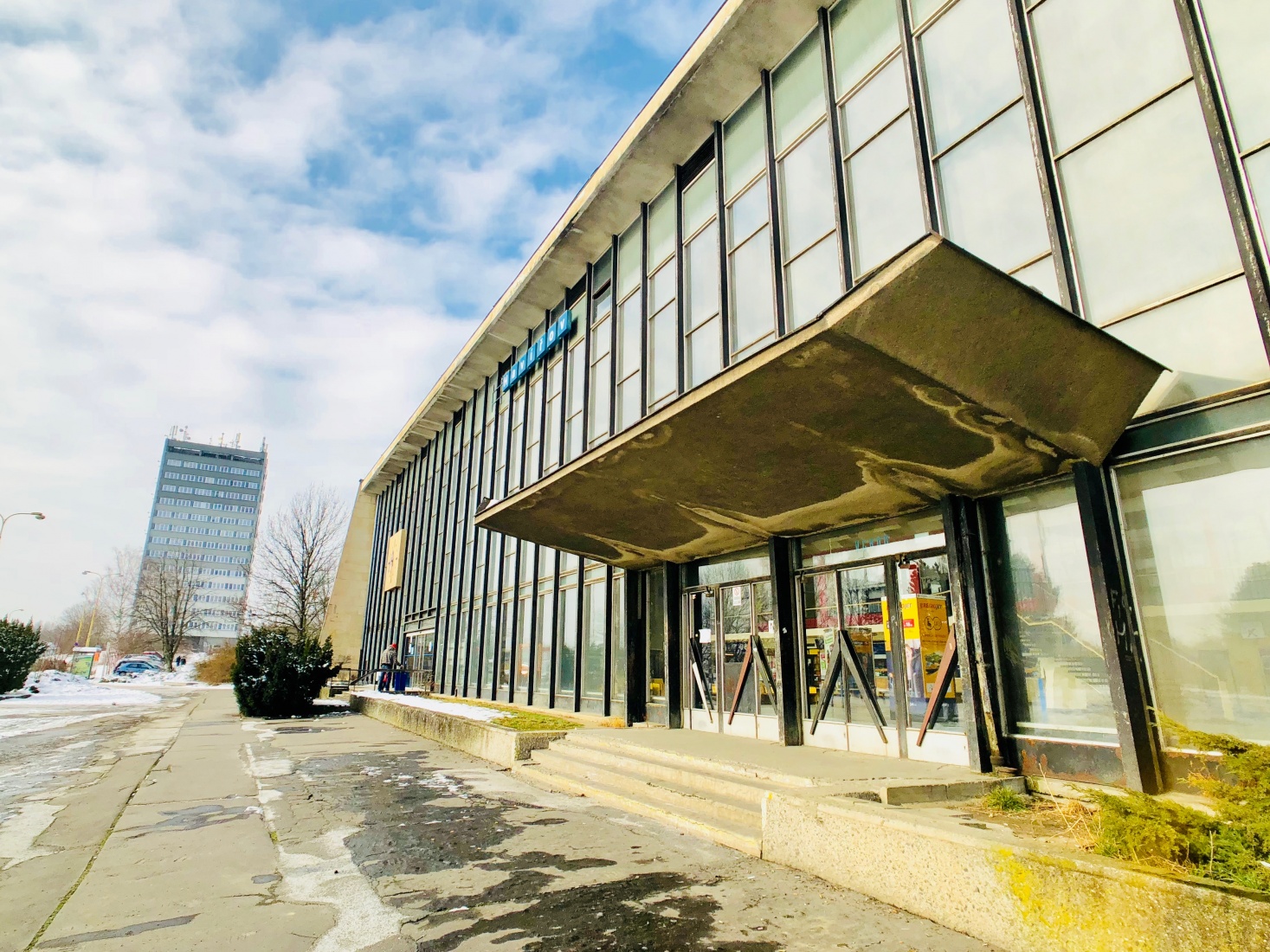
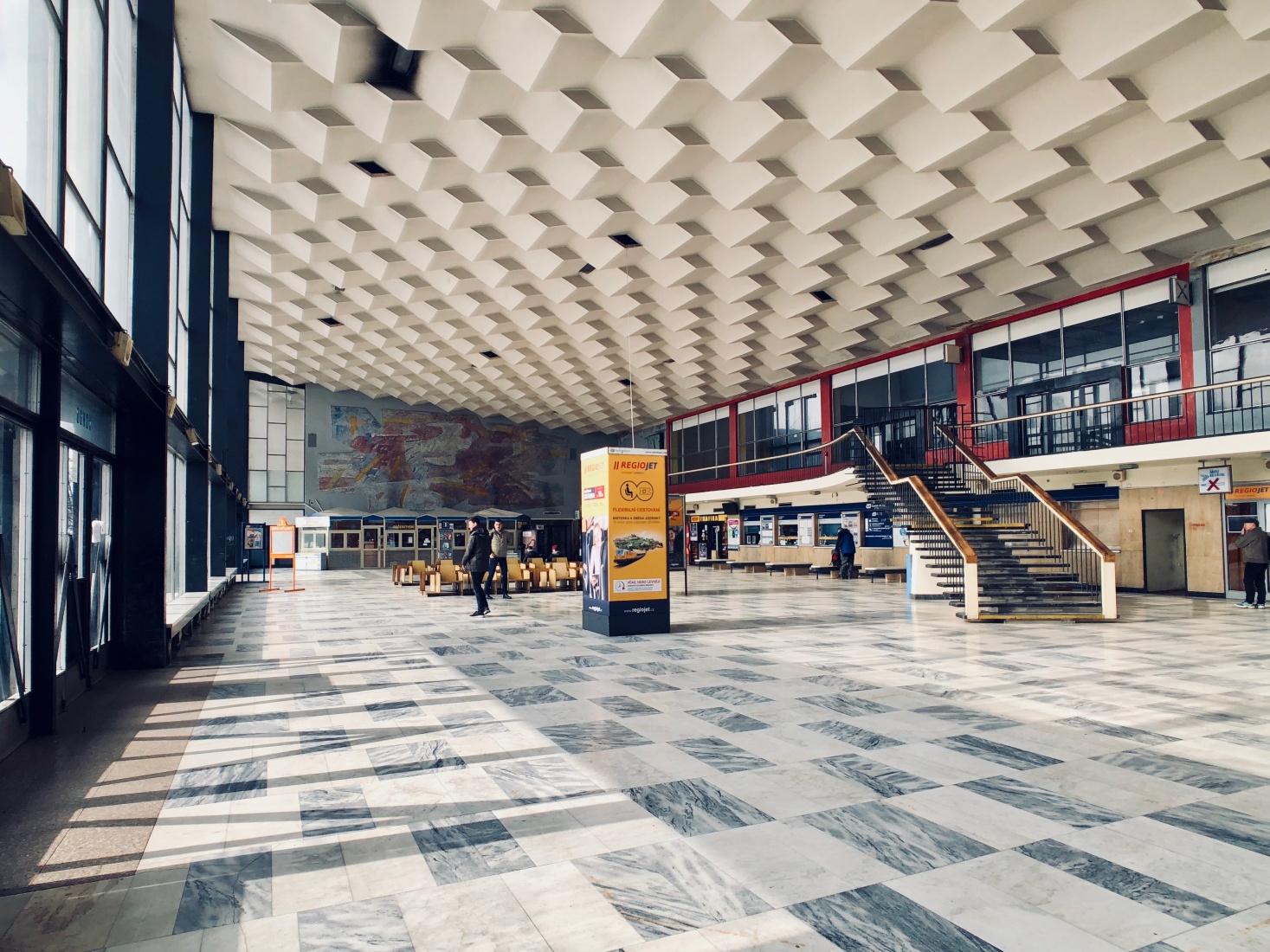
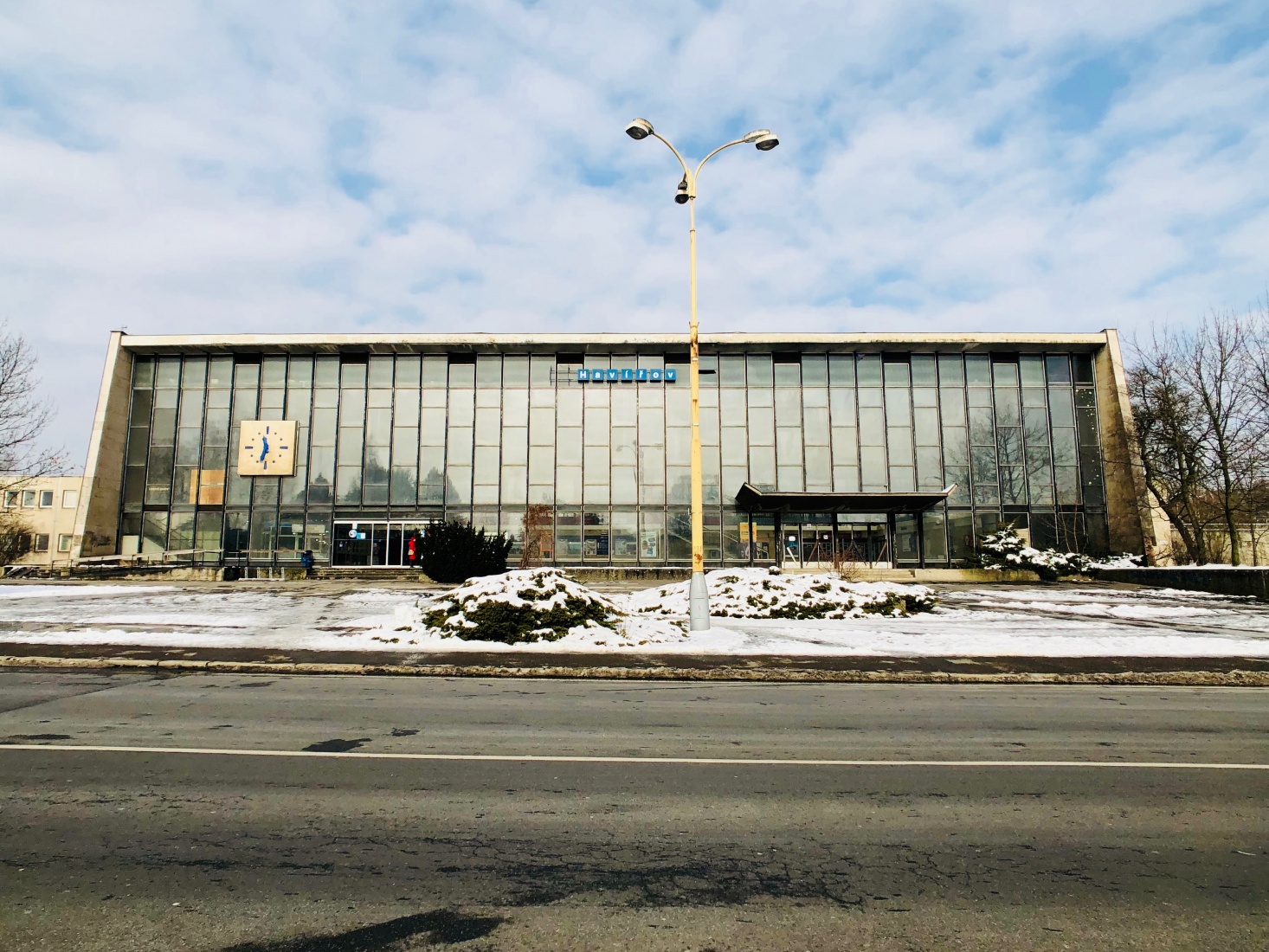
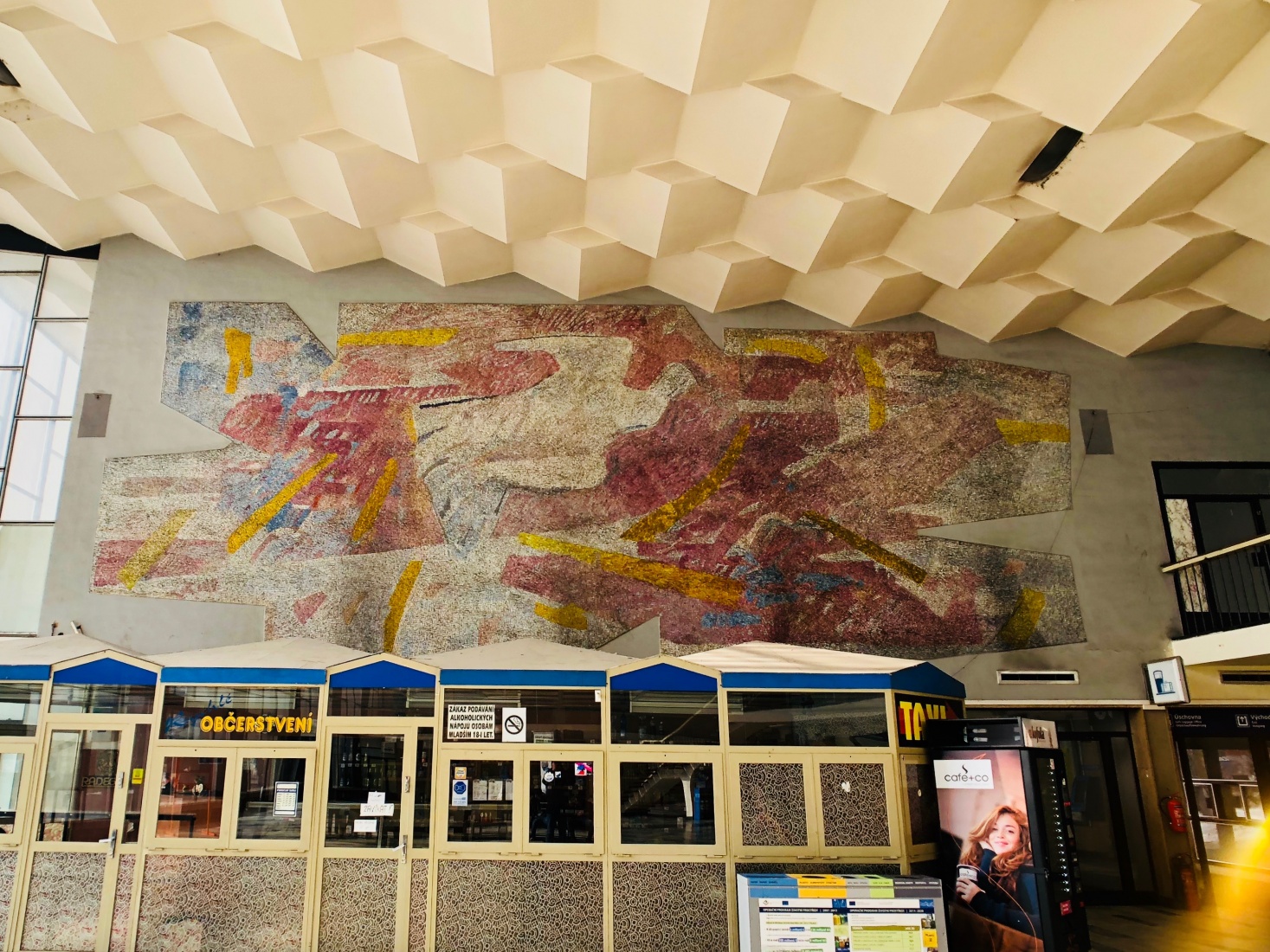
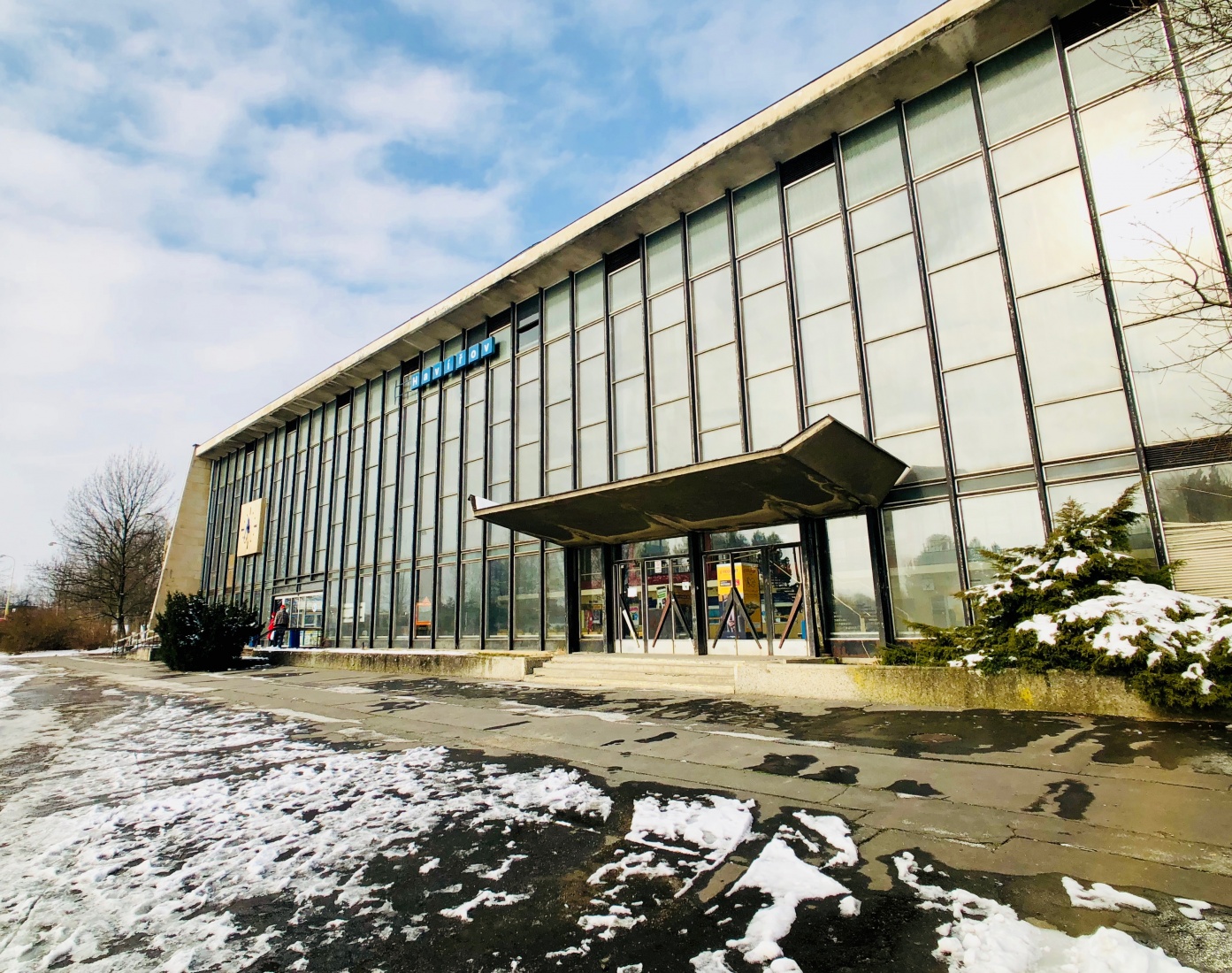
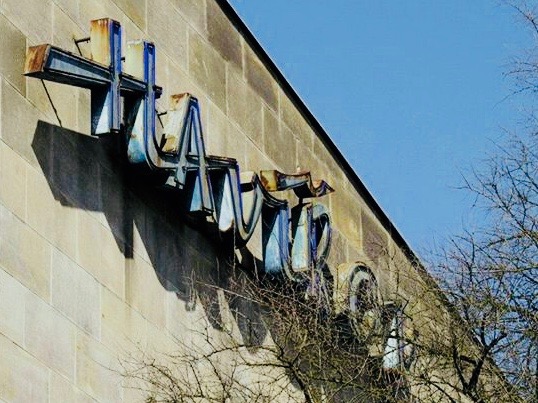
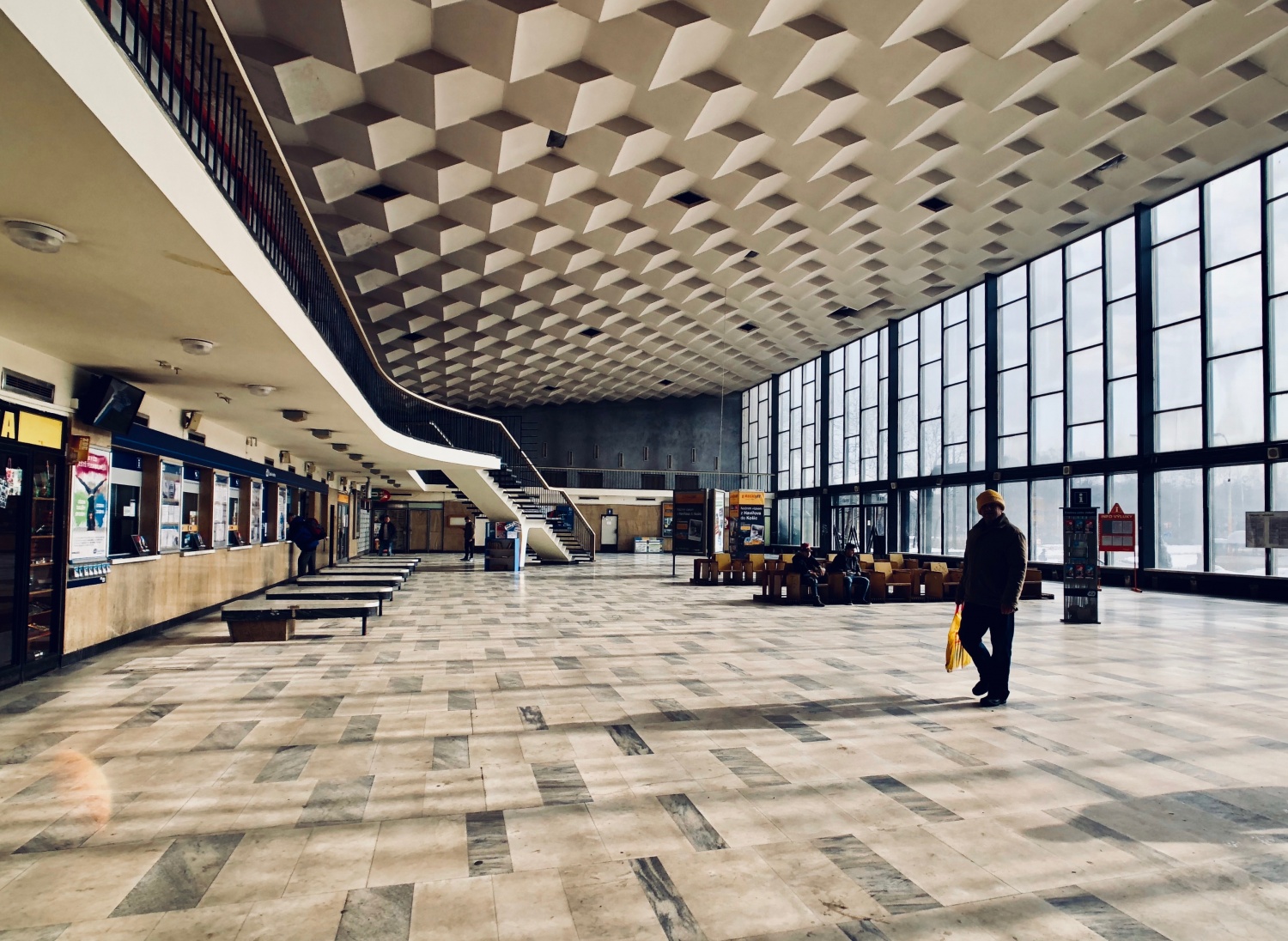



The interior of this place is stunning! Lovely photos and write-up; so pleased to hear they’re not likely to tear it down after all.
Thanks so much for leaving a comment. We’ll see what happens this year, but I’m keeping my eye on the place!
enjoyed your article! found it while working on my UCSD research about czech avantgarde art. havirov is now on my list for next time i’m back to opava, my nearby hometown
Came here while catching up on the Cold War Conversations podcast. I wish that glass mosaic could be preserved and conserved – I would imagine it being pretty spectacular if given a good renovation. The only motif I can clearly make out is the dove, but it seems to be flying through a war-zone 🙂
A note to those curious about the name of the town (I’m kind of a stickler for pronunciation):
People in the West often mispronounce the hooked r (?, ?) in Czech (it’s often heard or mispronounced as “sh” or “zh”). The most famous name with a hooked r is the great composer Dvo?ák, and I haven’t yet heard a classical radio DJ in the West pronounce it correctly. (The not-very-easy trick is to pronounce an r but bring the tongue forward to the “alveolar ridge” behind the front top teeth – it’s sort of a cross between an /r/ and a /z/ sound – it should sort of “buzz”).
When I first heard your guest spot on Cold War Conversations, I made the mistake of hearing that ? as some form of s, so my search for the town took a full minute of my valuable time as opposed to seconds (I hope it’s obvious that I’m joking here).
Anyway, just discovering your blog, which is very cool. Kind of inspiring, actually. Thanks for making it available.
-CG
Thank you, Chris! yeah, Czech pronunciation can be tricky. I haven’t been out there since writing this post, so I’m not sure if anything has happened in the meantime. I’m hoping they do the right thing and keep the building and re-purpose it if necessary. Best, Mark
Hey thanks for the reply. I found/find Czech pronunciation to be easier than Russian or Polish. Too bad the comments section doesn’t seem to be rendering the unicode characters I entered – I’m seeing question marks. Hm. Anyway, all the best
-cg
Late to this but my wife is from Havirov and I’ve loved that train station and those benches since I first visited the place over twenty years ago. 🙂
My wife is from Haví?ov and I’ve loved that station building – and the benches! – since I first visited over twenty years ago.